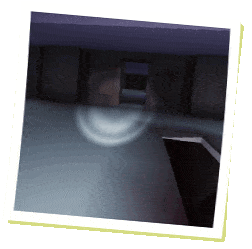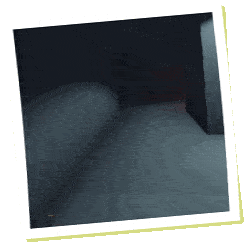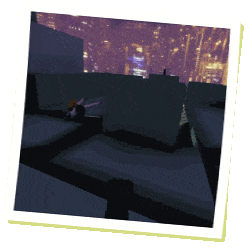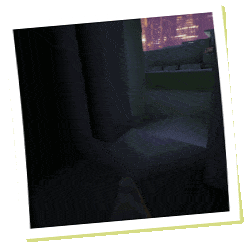Table of Contents [Show]
Receiver Review
January 16th, 2021
Receiver is an interesting FPS game, one that I've enjoyed playing for many years despite some of the negativity surrounding it. It certainly feels like a training manual more so than a real game, with realistic firearm manipulation teaching you how to handle real world firearms and not much else. That said, the experience offered by it is very unique, one you can continue coming back to thanks to procedural level generation and a steep learning curve stemming from the different firearms put on offer by it.

The end goal of Receiver is to collect 11 tapes scattered across the levels while managing your ammo reserve and trying not to get shot. Collecting all tapes is challenging, mainly because you die in one hit, and tapes are placed in loot piles at random.
In the meantime, you are given a random handgun from a selection of three, and test your mettle against enemies that can be crippled by targeting different weak points in their anatomy.
Each tape (found in random order) serves as a tutorial, or reveals some game world lore. Put shortly, the PC is a "receiver" - able to hear the voice in the tapes they collect rather than blank static. They are being instructed on how to proceed through a deadly event dubbed "The Mindkill", incited by a mysterious entity called "The Threat", residing in a different plane of existence.
This lore is not very relevant to the gameplay and can be safely ignored, albeit a nice addition to explain the player's motives and encounters throughout the game.
The gunplay in Receiver is phenomenal. Normally, pressing 'R' would have the in-game character of an FPS game choose a magazine from their carrier, insert it into the weapon, and rack (or release) the slide as needed. The safety mechanism would already be disengaged and the hammer pulled backwards; the entire process would be simplified down to a single animation in order to keep players engaged, or provide a more casual playing experience.
In Receiver, each of the aforementioned steps is taken separately by pressing different buttons on your keyboard. Players will have to eject the magazine from the weapon first, then holster the weapon in order to insert each round into the magazine (or cylinder) manually. Then, they will have to unholster the weapon and insert the magazine back into it. The slide will have to be released or racked manually, then the hammer pulled backwards and safety disengaged.

Custom Workshop weapons (more on that later) sometimes require the stance to be changed in order to operate the firearm; players can manually select which magazine to use if they so desire, as magazines do not share a loose ammo pool like in other FPS games. Players may elect to use a combination of keys to check the chamber and ensure the firearm is ready to fire.
I have never seen a game require players to go through such a meticulous process to get a single handgun ready to fire. As a firearm-enthusiast who has never fired a handgun in real life, I was amazed to see how many steps I had to take before I was able to fire the M1911 pistol provided to me.
The satisfaction that (eventually) comes from being able to reload a handgun in mere seconds as opposed to fumbling with the controls for minutes at a time is hard for me to describe. It is certainly more satisfying than pressing 'R' and unloading some more meaningless rounds into a target bunnyhopping across the stage. The challenge mainly stems from having to memorize and attribute reloading a weapon in 6-7 different steps to muscle memory, then factoring weapon recoil in as you try your best not to waste any ammo.
The game does not feature part malfunctioning or ammo misfiring, so really the only one getting the blame for the gun failing to function is you. Many a time had I lined up a shot perfectly only to forget the safety was on, or that I needed to pull the hammer backwards; sometimes I accidentally racked the slide with a round already chambered in, dropping valuable ammunition on the ground; or forgot which key inserted the magazine and which ejected it, unintentionally dropping the magazine instead of loading it.

This forces you to take a careful approach to combat, as the entire reload procedure becomes nigh impossible to complete while actively being engaged by hostiles. Many failed runs later teach you to properly "slice the pie" when scanning rooms, check your corners (and skies, for Hoverdrones), and think twice before sprinting through doorways and hallways foolishly assuming the rooms connected to them will be empty.
There are two enemy types in the game: one is a static turret, one is a flying drone - both are equally as deadly. Hoverdrones can't shoot from afar, but are able to chase after you through rooms. Static, rotating Killdrone Turrets are usually tucked away in corners waiting to shoot you as soon as you enter their line of sight. Their sensors give off light, allowing them to be spotted in advance if you're being careful. A short "beep" warns you before you are spotted and engaged, giving you a generous moment to react.
I like how different parts of the drones' anatomy can be hit to achieve different effects; for a Turret, hitting the rotor will stop it from rotating, but will not disable any of its other functions - mainly the ones allowing it to spot you and shoot you dead. Shooting the camera will keep the turret spinning, but will effectively disable it as it will no longer be able to see you. Shooting the ammo box will prevent it from cycling rounds, meaning it may fire the one it has in the chamber, miss, and won't actively fire more.
This mechanic is great for multiple reasons. You may put yourself into a situation where you don't know if you truly did neutralize the threat without getting close to it and inspecting it, putting yourself at risk. Sometimes you may disable it partially, and not be able to spare the ammo to finish it off, forcing you to approach it differently. Sometimes you may disable it in a way that blocks access to the rest of the room, forcing you to give its loot up.

Same for Hoverdrones; you may have disabled its ability to fly, but are the camera and gun still functional? Meet your demise getting tazed as you accidentally step on it.
I wish there were more enemy variants forcing you out of passive plays, or more aggressive drones that actively searched rooms after you. As it currently stands, the game favors passive play. This isn't necessarily bad, but pausing to reload your weapon after clearing each room with nothing pushing you onward may get tedious after a few hours of play.
This is especially true when taking the room variety into consideration. It isn't great; seeing the same map layout after a while gets boring.
The game's longevity can be increased by downloading custom rooms ("tiles") and guns from the Workshop, which is the one recent feature that prompted me to review this game positively so long after its release. The Workshop introduces a larger weapon variety into the game, namely long guns that don't otherwise exist in it. A bolt-action rifle and a pump-action shotgun work very well with Receiver's mechanics, as much as one could expect.
It's a neat concept to mess around with, especially great for its current asking price. If you want more of this - a modern-looking title with other, slightly controversial mechanics, such as unintentional weapon discharging and blinking - check out Receiver 2.